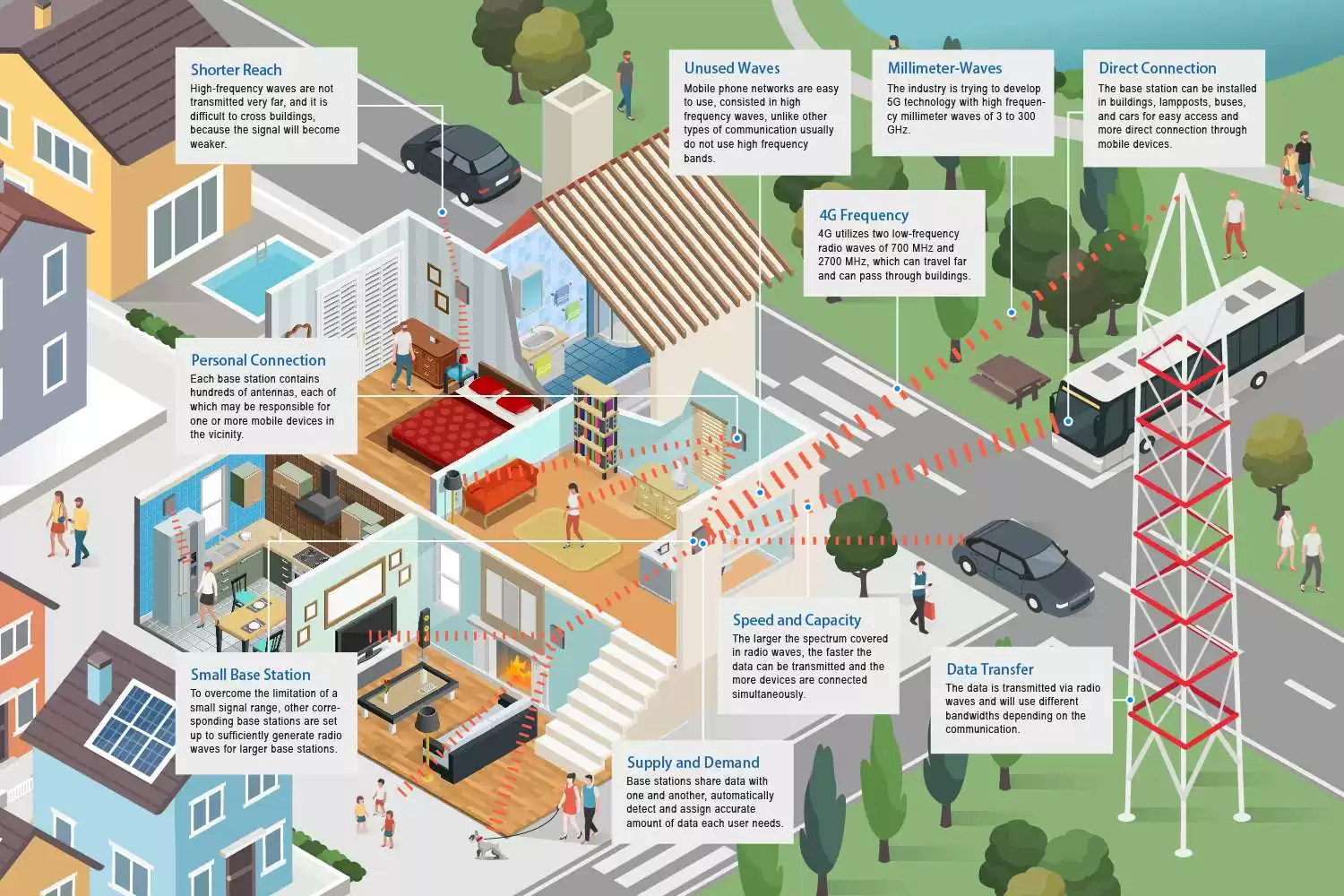
Small Base Station
To overcome the limitation of a small signal range, other corresponding base stations are set up to sufficiently generate radio waves for larger base stations.
Personal Connection:
Each base station contains hundreds of antennas; each of which may be responsible for one or more mobile devices in the community.
Supply and Demand
Base stations share data with one and another, automatically detect and assign accurate amount of data each user needs.
Unused Waves
Mobile phone networks are easy to use, consisted in high frequency waves, unlike other types of communication usually do not use high frequency bands.
4G Frequency:
4G utilizes two low-frequency radio waves of 700 MHz and 2700 MHz, which can travel far and can pass through buildings.
Data Transfer
The data is transmitted via radio waves and will use different bandwidths depending on the communication.
Millimeter-Waves
The industry is trying to develop 5G technology with high frequency millimeter waves of 3 to 300 GHz.
Speed and Capacity
The larger the spectrum covered in radio waves, the faster the data can be transmitted and the more devices are connected simultaneously.
Direct Connection
The base station can be installed in buildings, lampposts, buses, and cars for easy access and more direct connection through mobile devices.
Shorter Reach
High-frequency waves are not transmitted very far and are difficult to cross buildings, because the signal becomes weaker.


